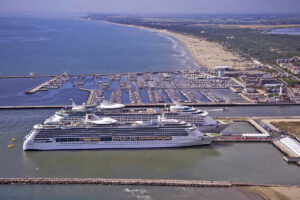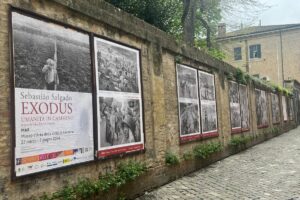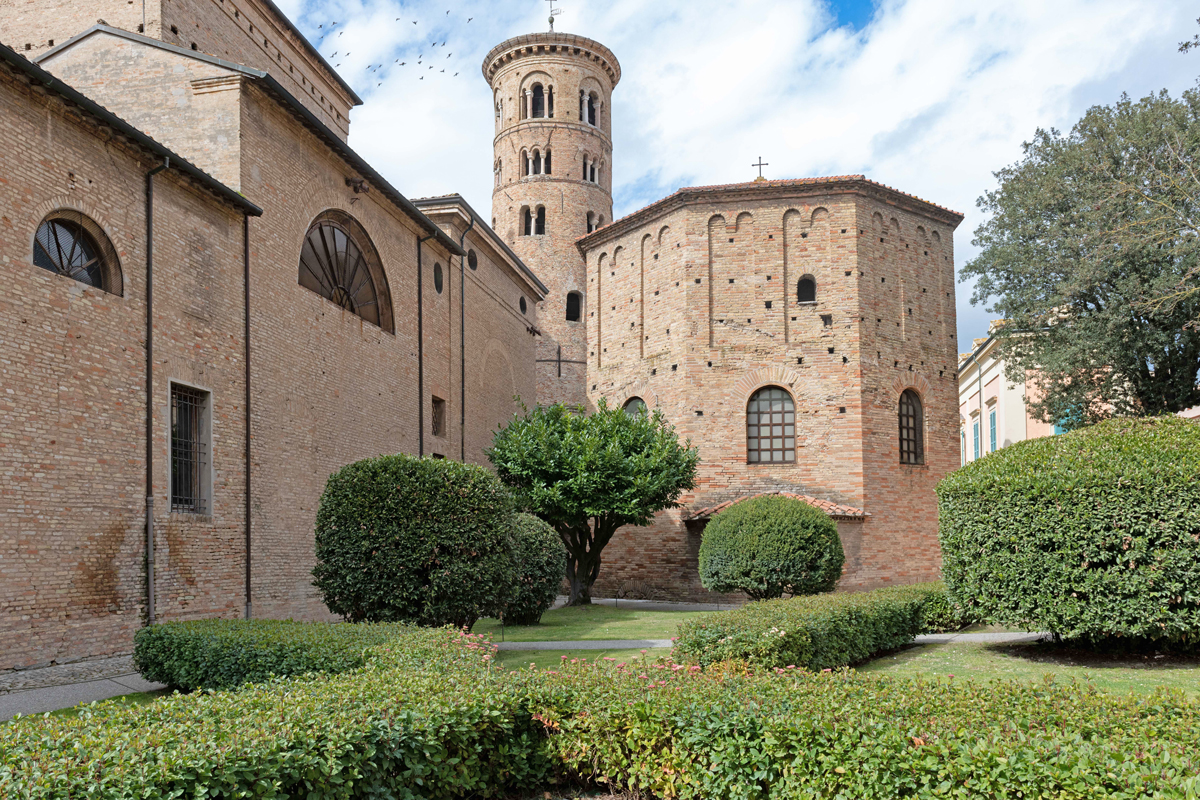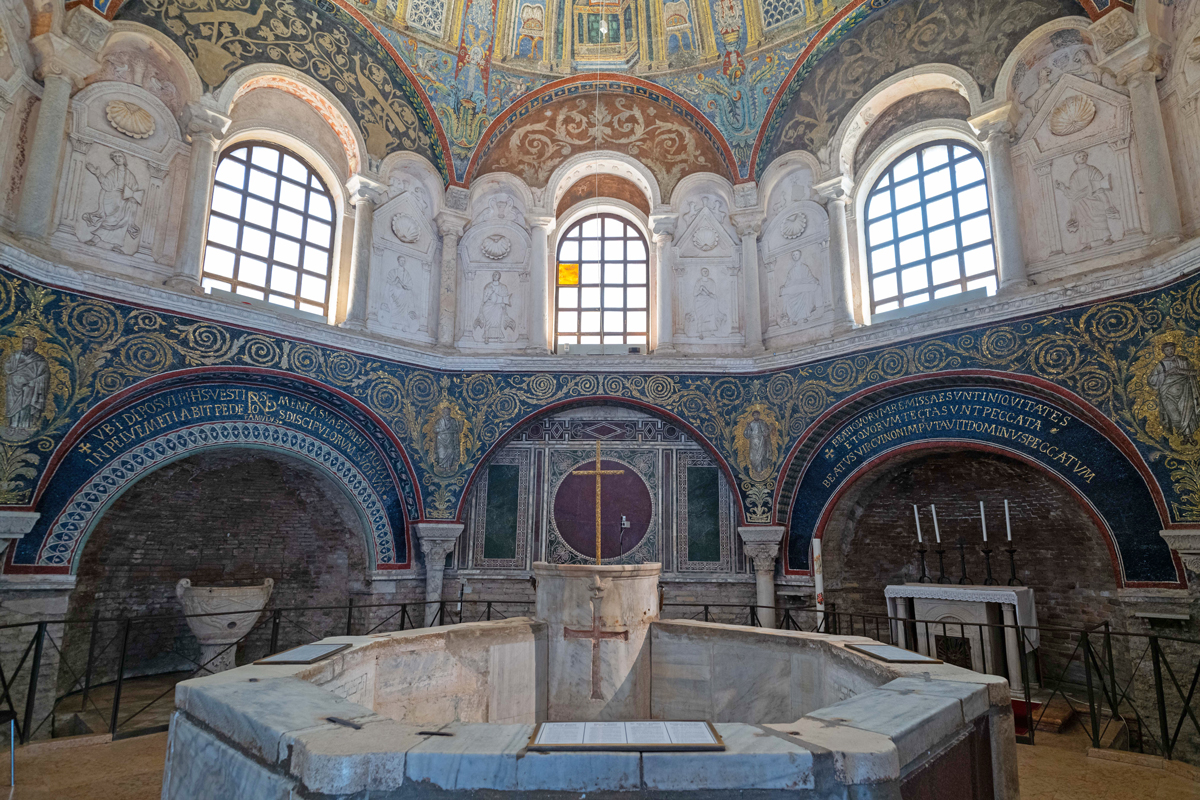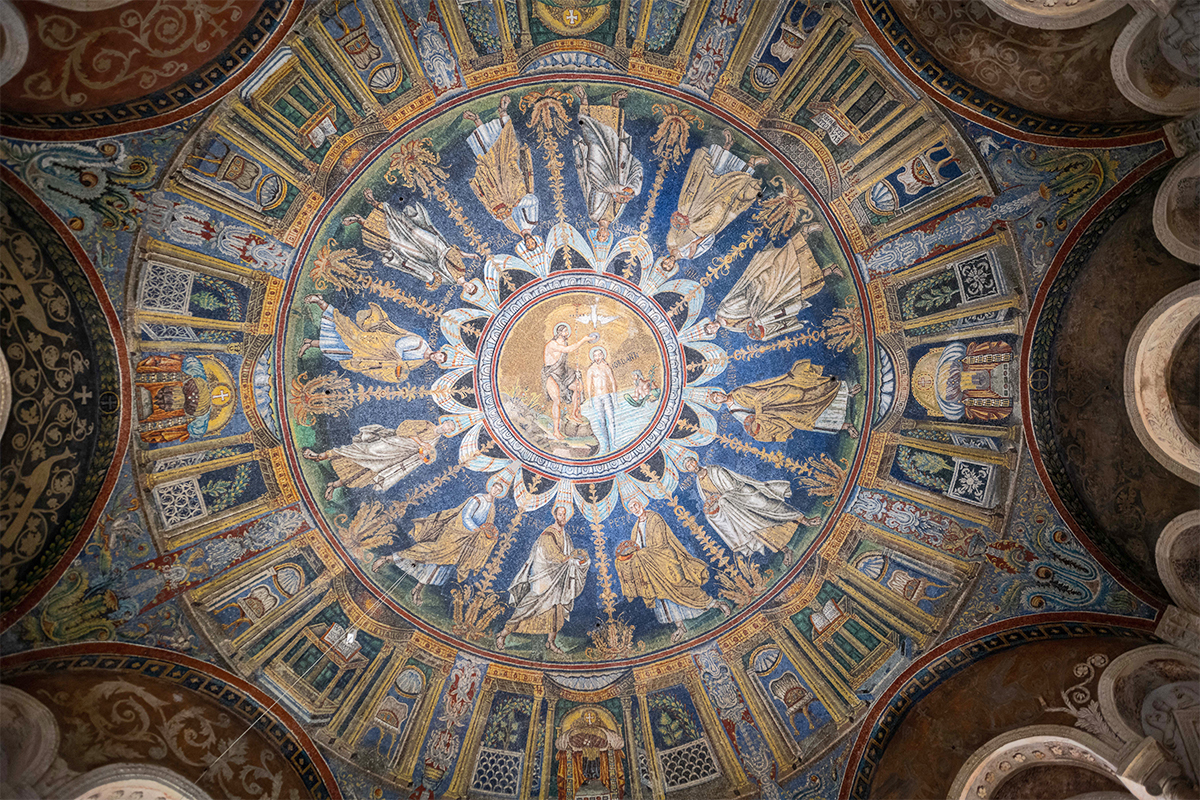Standing next to the Ravenna Cathedral, the NEONIAN BAPTISTERY (or ORTHODOX BAPTISTERY) is one of the oldest early-Christian monuments in Ravenna, UNESCO World Heritage monument since 1996.
Its inner decorations, especially the mosaics, are so astounding that even Carl Gustav Jung, one of the fathers of Psychoanalysis, was struck by their magic, so much so that he described his visit as a wonderful “hallucination”.
A bit of history
The baptistery probably dates back to the beginning of the 5th century and was built at the behest of Bishop Ursus, when Ravenna became capital of the Western Roman Empire.
Just a few decades after its construction, bishop Neon (450 – 475 AD) ordered a series of restoration works, including the cupola and the inner decorations that we can admire still today.
Unlike other baptisteries of the 4th and 5th century, both in the Western and in the Eastern ancient world (Antioch, Constantinople, Ephesus, Trier, Milan, Aquileia and Rome), this building is the best preserved one, both from the architectural and the ornamental point of view.
Apart from a 3-metre lowering of the ground due to the phenomenon of subsidence, which affected several buildings in the city as well, the baptistery has almost entirely retained its original appearance.
It features an octagonal plan and bare brick walls, which are alternately straight and apsidate, with round arch windows on the top and underground doors.
Inside, two orders of arcades run along the walls, and a threefold decoration embellish the room – marbles in the lower part, stuccoes in the middle, and mosaics with a clear Greek-Roman influence in the higher part.
Just as in the Mausoleum of Galla Placidia, the decoration is bright and rich, almost encouraging a passage from shadows to light, metaphorically recalling the ritual of baptism.
The dome’s decoration
As usual, the iconography of the dome is to observe in an ascensional direction, from outside to the centre, with its highest accomplishment in the clypeus.
The most external strip is divided in eight parts, in each of which alternate natural motifs, such as plants and flowers, empty thrones that recall the day of Universal Judgement, and altars on which lays a Gospel.
In the middle strip, on a blue backround, the twelve apostles stands out dressed in tunics and cloaks and divided in two groups, one headed by St. Paul and one by St. Peter. Walking hieratically, swinging, they walk in circle, carrying in their hands —veiled as a sign of obeisance— a laurel wrath, the symbol of triumph.
Finally, at the centre of the dome dominates a big medallion depicting Christ immersed until his ankles in the crystal clear waters of the Jordan, with John the Baptist: it is the oldest witness of a mosaic depicting Christ’s baptism inside a monument.
In the middle of the building, an octagonal basin made of Greek marble and porphyry rebuilt in the 6th century still preserves some original fragments of the 5th century.

